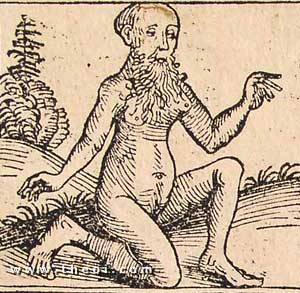The Machlyes were a mythical Libyan tribe of hermaphrodites whose bodies were male on one side and female on the other.
Origin
The historical tribe known as the Makhlyes dwelt around Lake Tritonis in north-west Libya. The warlike practices of the young women and long-hair of the men probably gave rise to the legend of androgyny. According to Herodotus, their young women held a ritual battle with sticks and stones annually with neighboring Auseans.
Quote
"[On the tribes of Libya:] Next to the Makhlyes are the Auseans; these and the Makhlyes (Machlyes), separated by the Triton, live on the shores of Lake Tritonis. The Makhlyes wear their hair long behind, the Auseans in front. They celebrate a yearly festival of Athena, where their maidens are separated into two bands and fight each other with stones and sticks, thus, they say, honoring in the way of their ancestors that native goddess whom we call Athena. Maidens who die of their wounds are called false virgins. Before the girls are set fighting, the whole people choose the fairest maid, and arm her with a Korinthian (Corinthian) helmet and Greek panoply, to be then mounted on a chariot and drawn all along the lake shore. With what armor they equipped their maidens before Greeks came to live near them, I cannot say; but I suppose the armor was Egyptian; for I maintain that the Greeks took their shield and helmet from Egypt." - Herodotus, Histories 4. 180. 1 (trans. Godley) (Greek historian C5th B.C.)
"Beyond the Nasamones [of Libya] and adjacent to them Calliphanes records the Machlyes, who are androgynous and perform the function of either sex alternatively. Aristotle [Greek philosopher C4th B.C.] adds that their left breast is that of a man and their right breast that of a woman." - Pliny the Elder, Natural History 7. 15 (trans. Rackham) (Roman encyclopedia C1st A.D.

